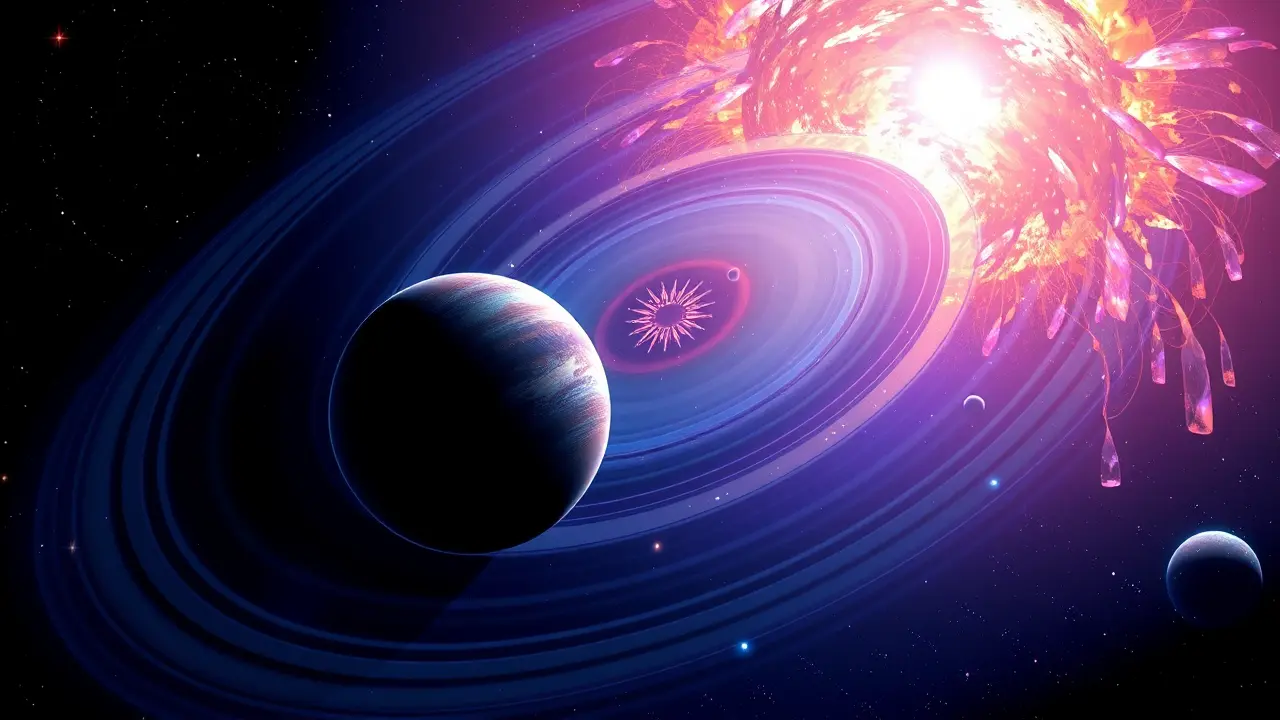
Sciencespace & astronomyExoplanets and Habitable Worlds
Astronomers discover dying stars eating their planets
TH
Thomas Green
4 hours ago7 min read2 comments
In a cosmic revelation that feels ripped from the pages of a grand space opera, astronomers have uncovered a brutal celestial reality: aging stars, in their final, bloated death throes, are consuming their own planetary children. This isn't science fiction; it's the stark conclusion drawn from meticulous observations by NASA’s Transiting Exoplanet Survey Satellite (TESS), which has been scanning the heavens like a relentless cosmic sentinel.By analyzing the light curves of nearly half a million stars, scientists performed a kind of galactic census, comparing the populations of close-orbiting, Jupiter-sized planets around younger, stable stars to those circling older stars that have expanded into red giants. The result was a glaring, silent absence.The data shows a dramatic shortage of these hot Jupiters around the swollen elder stars, providing the most compelling statistical evidence yet that these worlds don't just get scorched—they are utterly obliterated, dragged into the stellar furnaces of their dying suns. This process is the ultimate fate of our own solar system.In about five billion years, our Sun will exhaust its core hydrogen, swell into a red giant, and its outer layers will expand beyond the orbit of Earth, mercilessly engulfing Mercury, Venus, and likely our own world. What TESS has witnessed in distant systems is a preview of this inevitable apocalypse.The mechanism is a grim ballet of gravity and stellar evolution. As a star like our Sun ages, it begins to fuse helium in its core, causing its outer envelope to inflate hundreds of times its original size.This transformation radically alters the gravitational dynamics within the system. The immense, tenuous atmosphere of the red giant creates a powerful drag force on any nearby planet, slowly sapping its orbital energy.Like a satellite re-entering Earth's atmosphere, the planet spirals inward in a terminal decay, eventually crossing the Roche limit—the point where the star's tidal forces are stronger than the planet's own gravity—and is torn asunder. Its material is then vaporized and assimilated, briefly causing the star to 'burp' with unusual chemical signatures like lithium before settling back into its slow fade.This discovery fundamentally reshapes our understanding of planetary system longevity and galactic ecology. It suggests that a significant fraction of the planetary systems we see today are merely transient structures, destined for a violent dissolution.The implications for the search for life are profound; it places a hard expiration date on the habitable zones of sun-like stars, forcing us to reconsider which stellar neighborhoods are truly promising for long-term biological evolution. While our own Earth's fate appears sealed, the study opens new avenues for detecting these planetary death spirals in real-time, allowing us to witness the final moments of a world as it is consumed by its star, a fleeting, catastrophic spectacle in the vast, dynamic theater of the cosmos.
#featured
#stars
#planets
#red giants
#TESS telescope
#astronomy
#exoplanets
#stellar evolution
Stay Informed. Act Smarter.
Get weekly highlights, major headlines, and expert insights — then put your knowledge to work in our live prediction markets.
Related News
© 2025 Outpoll Service LTD. All rights reserved.
